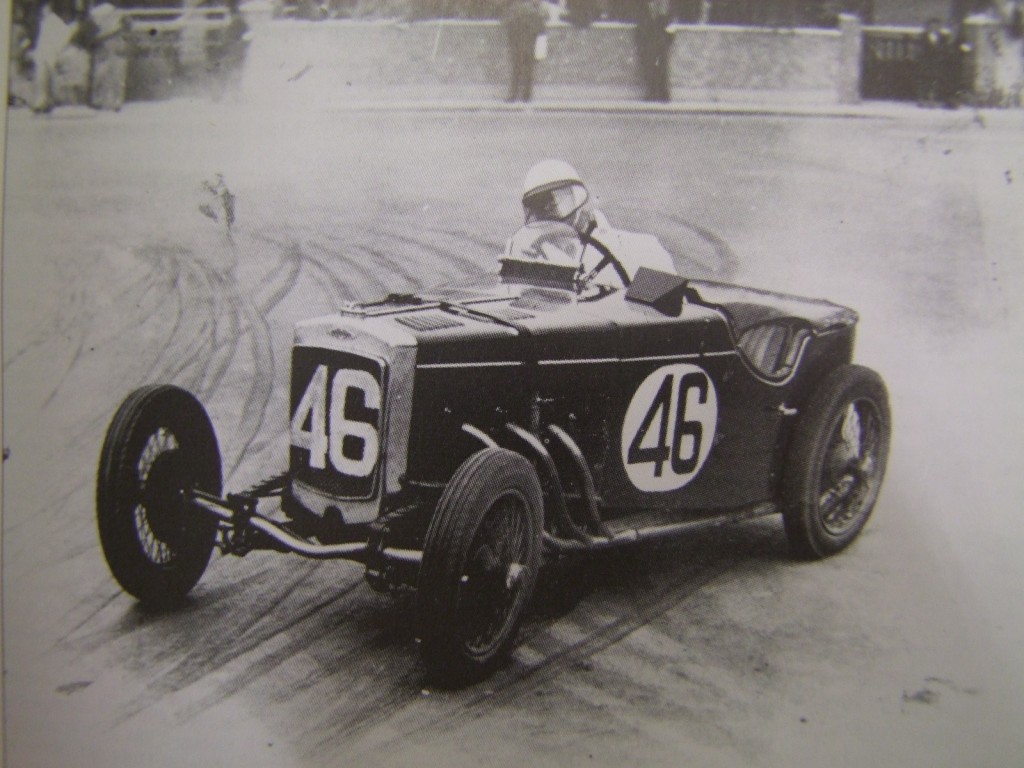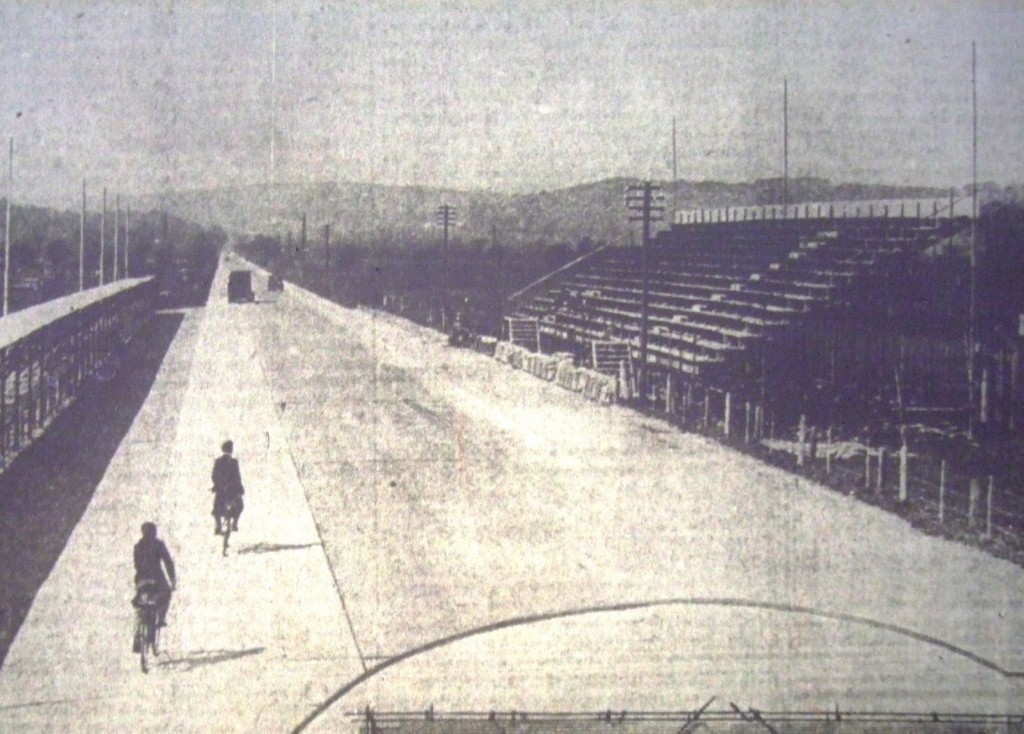
Article 590- 12 May 2011
In the Footsteps of St. Finbarre (Part 256)
Making a Cork Motor Derby, 1938
“Practice was at 6am…It was a really remarkable sight as thousands of men, women and children streamed on to the course in the light of the waning moon. Cigarettes glowed here and there, and motor-car headlights picked out the Carrigrohane Straight in bold relief against the blueness of the morning. Buses from all outlying suburbs of the city brought more thousands to swell the brave throng, which scorned such things as a very definite suspicion of frost in the air in its quest for speed and thrills” (Reporter, Cork Examiner, 21 April 1938, p.6).
The motor race of 1937 passed with great acclaim and it was not long before the Irish Motor Racing Club (under the organisation of Harold C. Brown) in association with the Cork and District Motor Club set out once more to further enhance Cork’s reputation as an Irish focal point of motor car racing. The Cork Examiner provides much detail as to how the next event came into being as does Wilfred Fitzsimmon’s book on Cork Motor Races, where he draws from the archives of the Royal Irish Automobile Club and the Irish Motor News for 1938
In January 1938, the announcement was made that the next meeting would comprise three races, a 200 mile race to be run under the new Grand Prix international formula, to be known as the Cork Grand Prix (with a prize of £1,000), a Formula Free race of 75 miles for cars not exceeding 1 ½ litres to be titled the Cork International Light Car Race (with a prize of £250) and a fifty mile handicap to be confined to racing and sportscars from Britain and Ireland and to be known as the Cork National Motor Handicap (with a prize of £100). Joseph McGrath, Managing Director of the Irish Hospitals Trust, was to present the entire prize fund together with a substantial contribution towards the organisation of the event. The starting money for the Grand Prix was higher that the going rate for Grand Prix meetings in Europe at that time.
From 1933 to 1938, the Grand Prix was run to the Formula Libre standard, meaning that there were no weight or engine restrictions. However in 1938, new requirements were enforced. A participating car without a supercharger had to have a minimum engine capacity of 1000cc and a maximum capacity of 4500cc for cars. The minimum engine capacity for cars with a supercharger was 666cc and a maximum capacity of 3000cc. There was a minimum weight of 400kg to 850 kg but this was on a sliding scale depending on the engine capacity. There was a free choice of fuel. The weight excluded fuel, engine oil and water.
The Cork 1937 organising team visited the racing departments of Auto Union, Mercedes Benz, Alfa Romeo, Maseratti, ERA, Délahaye and Bugatti. They were met with enthusiasm for the idea but the various departments flagged the problem of cars not being built and ready on time especially in light of the new Grand Prix formula.
Entries for the Cork Motor Races on 22 and 23 April 1938 amounted to a total of 47 cars. Twelve countries were represented amongst the entrants. For the principal race, the Cork Grand Prix, 15 entries were received including eight Italian Alfa-Romeos, two Italian Maseratis, while the entry list was completed by five French Delahayes. The Light Car Race attracted 19 entries with six British ERAs (English Racing Automobile) and nine Italian Maseratis. The handicap, which was confined to British and Irish drivers, attracted 13 entries, three from Great Britain, three from Northern Ireland and the remainder from Ireland. The ERA entry was down due to the new Grand Prix ERA not being ready. The same applied to the German Mercedes Benz and Auto Union.
The Ford Motor Company loaned a complete bay of their Cork plant for the use of the competitors to keep and work on their cars, in addition to giving equipment and facilities as required. The Irish radio authorities made special arrangements for the broadcasting of the running commentary on the event, which was relayed to many outside stations including England and perhaps further afield. There were also press facilities, which enabled representatives of home and outside newspapers to flash the result of the big race to the waiting public. Technical experts from almost every motor manufacturing company in Europe were present during the race period and before hand for the two days of practice.
The first morning’s practice for the Cork Motor Race brought 20 drivers to the course before dawn on Wednesday, 20 April 1938. It also brought 20,000 spectators, who took their places on the stand and at vantage points around the track by moonlight. Those of the spectators who came in search of thrills had many as the high powered cars sped down the Carrigrohane Straight at speeds of between 100mph and 140m.p.h. The main interest was focussed on the two French cars on the Straight Road, where one driver René Dreyfus gave some tremendous bursts of speed reaching 140m.p.h. as he passed the pits. There was also a large crowd present to watch the arrival of further drivers and their cars on the M.V. Innishfallen on Penrose Quay.
To be continued…
Captions:
590a.Dudley Colley, winner of the National Handicap Race, in his 1,4966cc Frazer-Nash, Cork, April 1938 (source: W. Fitzsimmons)
590b. Grand Stand and Pits nearing completion, Carrogrohane Straight Road, Cork, April 1938 (Source: W. Fitzsimmons)
